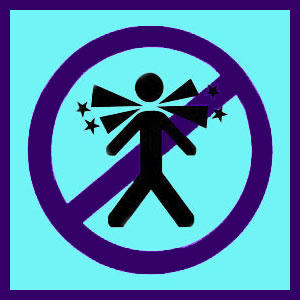
A broken neck describes damage to one or more of the cervical spinal bones. This type of trauma can be minor or major, with extreme neck fractures being some of the most potentially life altering of all back injuries. A broken vertebra in the neck can be caused by any direct trauma, such as a serious fall, motor vehicle collision, sports injury or act of violence.
The cervical spine consists of the first 7 vertebrae in the spinal column and their respective intervertebral spacers. If any of these vertebral bones is fractured, broken or seriously misaligned, the patient is said to have broken their neck.
Any broken spinal bone can be a serious condition, but damage to the cervical vertebrae carries a particularly high risk for life-long disability due to the density of vital neurological tissues packed into the neck region.
Whiplash does not usually damage the actual spinal bones, but may cause fractures in extreme cases.
This treatise explains what it means to break one’s neck and details the anatomical implications that the diagnosis involves.
Anatomy of a Broken Neck
Cervical vertebrae can be easily injured due to their relatively light structure when compared to other spinal vertebrae. Additionally, the spinal cord is not as well protected in the cervical region as in other areas of the spinal column. Therefore, there is a higher incidence of spinal cord injury and spinal nerve injury during cervical trauma than in other spinal zones.
The head is a tremendous weight for the spine to support and this weight can act as additional force upon the cervical region in cases of extreme trauma. This escalation of force is what creates the ideal circumstance for severe trauma to occur from an excessive extension, flexion or rotation of the head and neck.
Broken Cervical Spine Versus Cord Damage
Just because a patient has broken their neck does not imply that any damage has been done to any neurological tissue. Bones can be broken without severing or even bruising the spinal cord at all.
However, severe injuries to the cervical spine can cause cord damage which might result in catastrophic consequences for the patient. Cervical cord injuries will affect all bodily systems below the level of the injury and a complete spinal cord injury can result in total paralysis from the neck down. This condition was formerly known as quadriplegia, but is now more appropriately named tetraplegia.
Broken Neck Facts
If you have broken or fractured cervical vertebrae without damaging your spinal cord, consider yourself very lucky. Most bone injuries will heal completely with appropriate medical treatment. If you do have spinal cord damage or even a paralytic condition, there are still many therapies which might help you to regain function.
I have high hopes for such cutting edge technologies as stem cell therapy for spinal cord injuries. Hopefully, the scientific, religious and political factions will some day come together and agree that this therapy is a tremendous hope for future treatment of spinal cord damage. Until then, we are all waiting… patiently.
Sometimes, minor fractures and hairline cracks are blamed for sourcing chronic pain, despite evidence that they have completely resolved. In these cases, be sure to get a second opinion and consider the possibility that some mindbody stress condition may actually be perpetuating the symptoms despite total anatomical healing.
Remember, any significant trauma will affect the mind, as well as the body, and many injuries can act as trigger mechanisms for psychogenic pain.




